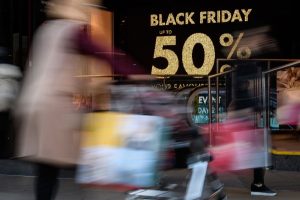Across the world, the antibiotics that farmers use to prevent illness in their animals are losing effectiveness as bacteria develop antibiotic resistance. According to new research, it’s a huge problem, one that’s been masked by a longstanding focus on the risk that resistant bacteria pose to humans instead.
This trend in the animal world carries a double danger. Long term, these resistant bacteria could travel to people, creating untreatable, hard-to-contain infections. But even now, within the meat industry, routine use of antibiotics is harming farmers’ ability to raise animals and treat them if they get sick.
The problem isn’t universal. The global hot spots for antibiotic resistance in animals are China and India, Brazil and Turkey, Iran and Kenya, and a handful of other emerging economies—exactly the places where rising demand for meat is spurring huge expansions in industrial-scale animal farming.
This is all revealed in a complex analysis published today in Science, the product of four years in which a multinational team of researchers hunted down more than 900 studies published between 2000 and 2018. Across those years, the proportion of bacteria that no longer responded to many of the drugs used to treat them tripled. Those bacteria were harvested from pigs and chickens, the most important meat animals in the developing world.
“Everyone talks about antibiotic resistance in humans, but no one has been talking about antibiotic resistance in animals,” says Ramanan Laxminarayan, the director of the Center for Disease Dynamics, Economics & Policy in Washington, DC, and the paper’s senior author. “Yet there are far more animals than humans on the planet, and they are essential for livelihoods across the developing world. If we are not able to treat sick animals, that will have a huge impact on global poverty.”
The problem arises from a way of using antibiotics that is both common and surprisingly little known. Antibiotics are added to animals’ feed, accelerating their growth and preventing them from getting sick in crowded barns and feedlots. Possibly three-fourths of all the antibiotics dispensed in the world are used this way—which is not at all how they are used in humans, where the point of the drugs is to cure infections, not prevent them.
This indiscriminate use of antibiotics dates back to the drugs’ earliest days, and it has been a touchy policy point for most of that time. The practice is risky because whenever antibiotics are deployed, the microbial world reacts to them with defensive mutations that protect bacteria from being killed. It’s also troubling because the bacteria present in animals are the same ones—Salmonella, Campylobacter, E. coli—that cause illness in humans. If a drug loses its effectiveness on farms, it won’t work to cure a person’s infection either.
Most of the attention paid to antibiotic use in animals has focused on the threat that farm-created resistance causes to humans. One example: As many drugs have lost their effectiveness, medicine has reached further back on the shelf, to antibiotics that went out of favor years ago. About a decade ago, doctors needing a last-resort antibiotic turned to an old but still effective antibiotic called colistin to cure highly resistant infections. Then in 2015, researchers discovered that colistin resistance was spreading around the world. The reason turned out to be agriculture: China and Europe had been using thousands of tons of the drugs to prop up pig production. Since then, the Chinese government has banned colistin from its agriculture—but the gene creating colistin resistance has spread to dozens of countries worldwide.
Laxminarayan and his colleagues were convinced that farm-created resistance was posing an equivalent danger to livestock, but—unlike in human medicine—there were no large data sources to help them prove it. Surveillance for resistance on farms is patchy and politically sensitive. They turned instead to searching for projects in which researchers had measured resistance in animals and meat at single moments in time.
They ended up finding thousands of studies published in multiple languages, a set they then narrowed down to 901 in which the science seemed robust. The surveys had been performed in 822 locations across the world, and collectively reported analyses of 285,496 samples taken from animals.
Processed together, the surveys revealed rising rates of resistance in animals across a wide swath of antibiotics. That includes the newer, more complex drugs that replaced the older, cheaper ones lost to resistance. The biggest increases appeared to be in parts of the world where industrial-scale farming has expanded and regulation has not kept up. Though for some countries, that turned out to be hard to prove: Some of the largest meat-producing countries had the least available data.
The breadth of the problem worries Lance Price, a microbiologist and the founding director of the Antibiotic Resistance Action Center at George Washington University, whose work focuses on antibiotic use in food-animal production. (He was not involved in the study.)
He points out that the most virulent, multidrug-resistant pathogens emerge almost by accident, through the fortuitous accumulation of a few pieces of genetic material within a single bacterium. Those combinations occur only where lots of antibiotics are being used in lots of animals at once, and until recently, they have been rare. “But if you use antibiotics in billions of animals around the globe, you are creating the opportunity for rare events to be no longer rare,” Price says. “This creates lots of possibilities for new resistance elements to emerge.”
One reason developing-world agriculture relies so heavily on antibiotics is that they allow farms to operate at low margins, without spending scarce funds on veterinary care or disease containment. But poor animal hygiene and lax biosecurity don’t only create the conditions that demand antibiotics—they also allow bacteria to flow off farms and into the wider world, increasing the chances that resistant bacteria could reach and sicken humans as well.
If there’s a bright spot in the analysis, it is that it illuminates not only where antibiotic misuse is a problem but also where it is not one—yet. For instance, surveys from sub-Saharan Africa showed that rates of resistance were still low in most countries. That may be a signal that animal agriculture hasn’t intensified as much as it has in Asia, and that there may be time to influence those countries to go a different way.
“We shouldn’t look at low- and middle-income countries as a single group,” says Thomas Van Boeckel, an epidemiologist at ETH Zurich and the paper’s first author. “Some countries are in a dire state, but others don’t have much of a problem.”
That diversity may also indicate where political pressure could make the most difference. Three years ago, the United Nations General Assembly held an all-day meeting on the problem of antibiotic misuse in medicine and agriculture, only to hear from some countries’ representatives that feeding their own people was a much higher priority than attending to global public health.
Knowing which countries or locations are resistance hotspots, and focusing efforts on them, could help soothe that tension. It could shore up small-scale farming in areas where animals are critical to families’ survival. And it might give international donors, not to mention affluent nations, some guidance for where their funds could offer the most help.
More Great WIRED Stories
- WIRED’s 13 must-read books for fall
- New clues show how Russia’s grid hackers aimed for physical destruction
- The unbuilt streets of California’s ghost metropolis
- The biggest iPhone news is a tiny new chip inside it
- One scientist’s quest to bring DNA sequencing to every sick kid
- 👁 How do machines learn? Plus, read the latest news on artificial intelligence
- 🎧 Things not sounding right? Check out our favorite wireless headphones, soundbars, and Bluetooth speakers



